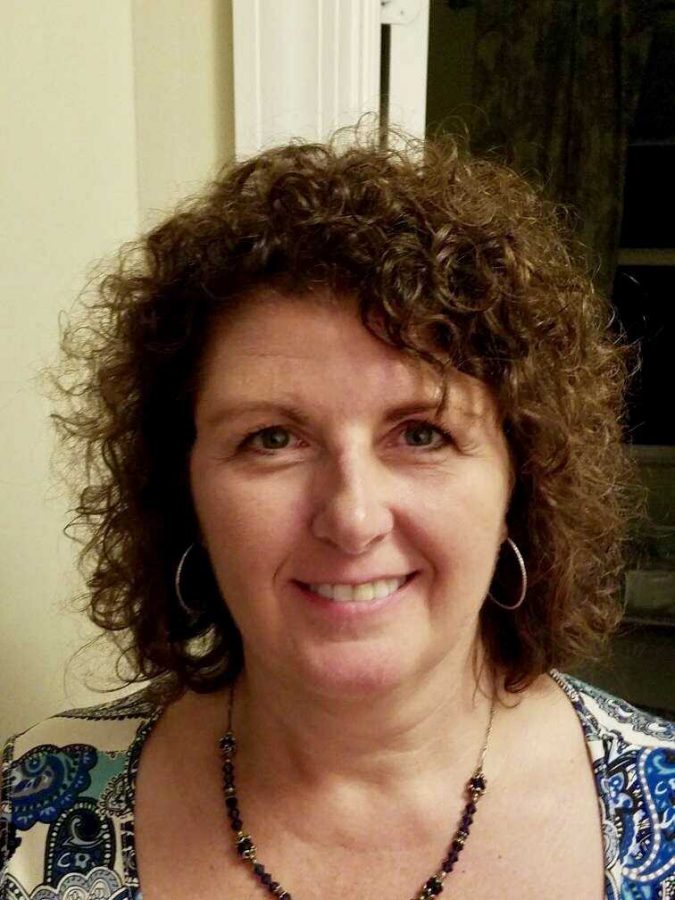Retiring Spanish Teacher, Doctora Jamie Gustafson
April 22, 2019
On March 15th, Doctora Gustafson met with me to discuss her thirty-three year teaching career— after school, on a Friday. Her willingness to work at this inopportune time reflects the generous aura I came to know, encapsulated in her final comment: when I noted how fulfilling it must be to have impacted so many lives, Gustafson adjusted my perspective. “That’s not how I look at it.” Instead, she claims, “how lucky, how honored I am to be in a place where I get to be used every day, to serve” youth in any way they need.
Gustafson’s path to teaching began in Urbana-Champaign, at the University of Illinois, so naturally, she says, “I bleed orange and blue.” She studied abroad in Colombia for a semester in her senior year to put her Spanish major to practice, and stayed at U of I for a fifth year following her travels abroad. Her love of learning motivated her to pursue a Master’s degree in Curriculum and Instruction at Concordia, and later, a PhD in School Administration from Loyola.
Even after she completed her formal education, she never stopped learning. Gustafson remarks, students “help me to learn. Learn about themselves, learn about the world, learn how to listen…. I learn things everyday from them. Whether it’s something literal or a story that they tell me, or I learn about life or I just change as a person— I have that opportunity 150 kids a day.” She also deeply values Warren’s teachers, an infinite fount of wisdom. “There is so much knowledge in this school… Whenever I need to know something, there are experts in every single field… Anything, anything I want to know” is right here at our school, residing in someone’s mind, she states.
In addition to the myriad of educational resources that Warren offers, Gustafson will miss the treasured memories our school has provided her. One such memory is that of a “fun and goofy” student she had for study hall in her first year teaching.
“When I was a 1st year teacher, I was so shy and so nervous,” she claims. “I had a study hall in the library, and there were administrators that were around,” so she felt like “everything’s got to be perfect.” As she walked past the student, “he purposely fell down out of his chair,” joking, “She pushed me! She pushed me!” Gustafson was “so scared,” assuring the administrators that she, in fact, had no part in this tomfoolery. She has since recovered, and is now able to look back on the memory fondly.
Above all else, Gustafson will miss her students. “Being with students makes me happy,” she remarks. “It makes my heart happy. It brings a smile to my face everyday, [and] it keeps me young.” Gustafson claims even her family can see how brightly she lights up when they cross paths with former students in public, evidence of the vitality she inherits from her pupils. “I’ve been a teacher longer than I’ve been a wife or a mom,” she says. Her identity was formed and is continually informed by her career; ‘educator’ seems to be her master status.
French teacher Mrs. Kosonen, long term friend and colleague of Gustafson, confirms her dedication to the students and the school. From the beginning, her generosity was evident: on Kosonen’s first day of new teacher training, Gustafson “immediately offered to help [her] and others find [their] rooms and get materials.” This giving nature never ceased throughout her career; Kosonen says she always leads with a “person-first attitude… If a student is struggling, she takes the time to find out what is standing in the way of learning.” She reaches out to all students and makes sure to keep an eye out for “those who may benefit from an extra smile” or need additional support, Kosonen claims. She is an educator through and through, advising in academics as well as morality; “when correcting a student,” Kosonen says, “she helps them maintain their dignity through asking questions of how they might handle a similar situation the next time instead of simply correcting them.”
Gustafson’s work extends far beyond the hours of the school day through committees, reviewing scholarship essays, and proctoring many SAT/ACT tests, but still manages to have fun. Kosonen describes a tradition they shared: “When we were young teachers, along with another colleague, we used to have grading parties. We would all get together at one of the others’ houses and grade our papers together to make it more fun, if that’s possible. She and the other teachers both taught Spanish, they would put Carnaval de Pasiones on the TV and I would try to figure out what was going on.” For her willingness to lend a helping hand to colleagues and students alike, for her ceaseless dedication to Warren, for her experience and advice, Kosonen jokingly says Gustafson is like her “Yoda.”
Principal Parrott of the Almond campus further praises the Gustafson legacy, as “Doctora Gustafson’s dedication to Warren and the Foreign Language Department as a Spanish teacher has impacted many students over the course of her career. She has taught numerous levels of the Spanish language to our students, chaperoned field trips abroad, and provided leadership to the department. She most recently has led our chapter of Spanish National Honor Society and provided many activities for our students to participate in. Her experience and expertise as an educator will be greatly missed and I wish her the best in her retirement.”
As a whole, Warren has inspired Gustafson due to its “small school feel,” despite its immense student body. Everyone seems “to know each other, to accept each other, to like each other.” She stresses how lucky we are to be a part of such unusual diverse harmony. Gustafson proclaims, “I love Warren, I do…. I actually consider it in some ways my home.” Though she’ll soon leave these familiar walls with hopes of travelling the country, she wishes us to maintain “that small school feel, almost like a family.”
In her effort to uphold the warm, united environment of our Warren, Gustafson made it her personal challenge to smile as much as possible during a year when she donned braces; she fought against her fears of appearing to try too hard at relating to students. At the end of that year, when teacher superlatives were released, Gustafson would be remembered as the one who “always smiles.”
On par with this positive repute, if limited to one last message to impart on her students, Gustafson would guide us in a three-fold lesson: “Be kind, always. Listen, truly listen, don’t just wait to talk” and “smile— because you don’t know how that other person’s day was, so always smile.”









